POMIAR BEZPIECZEŃSTWA FOTOBIOLOGICZNEGO
Zintegrowane rozwiązanie do pomiaru zagrożenia niebieskim światłem
Strona główna / Photobiological Safety
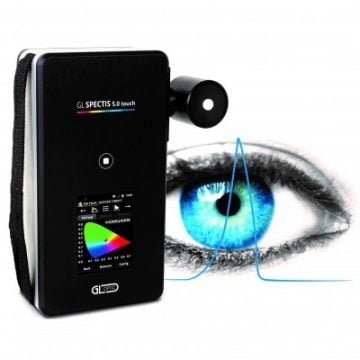
Pomiar promieniowania optycznego
Sztuczne i naturalne źródła promieniowania optycznego, w tym źródła światła, mogą emitować promieniowanie optyczne spoza zakresu widzialnego - z zakresu ultrafioletu i podczerwieni, które może być źródłem poważnych zagrożeń fotobiologicznych dla ludzkich oczu i skóry. W szczególności promieniowanie ultrafioletowe jest głównym źródłem zagrożeń fotobiologicznych, ale narażenie na promieniowanie widzialne (zwłaszcza niebieskie) i podczerwone może być również szkodliwe, gdy zostaną przekroczone pewne limity.
Zgodność z normami IEC 62471 i IEC 14255
Międzynarodowe normy i dokumenty prawne (EN/IEC 14255 i EN/IEC 62471) nakładają na producentów sprzętu oświetleniowego obowiązek informowania użytkowników o zagrożeniach fotobiologicznych związanych z użytkowaniem ich produktów. Informacje te są szczególnie istotne dla pracodawców, którzy są zobowiązani do przestrzegania przepisów prawnych związanych z jakością światła w miejscu pracy.
Aby wesprzeć producentów oświetlenia i laboratoria fotometryczne w ocenie grup ryzyka zgodnie z międzynarodowymi normami, GL Optic dostarcza przenośny, laboratoryjny system pomiarowy, który upraszcza te złożone zadania pomiarowe.
Ocena grupy ryzyka
Ten system pomiaru zagrożenia niebieskim światłem wspiera operatora podczas całego procesu pomiarowego w celu uzyskania wiarygodnych danych i natychmiastowego przedstawienia wyników, które pomagają zadeklarować grupę ryzyka dla LED i innych produktów oświetleniowych: RG 0 - grupa wolna od ryzyka aż do RG 3 - grupa wysokiego ryzyka.
Szybciej i łatwiej
Pomiar zagrożenia niebieskim światłem jest złożonym zadaniem metrologicznym i wymaga specjalistycznego oprzyrządowania. Stworzyliśmy system, który jest łatwy w użyciu i pozwala na szybsze testy i pomiary produktów LED. Zacznij samodzielnie mierzyć produkty LED i uniezależnij się od usług zewnętrznych laboratoriów fotometrycznych.
Wyniki jakości laboratoryjnej
Sercem systemu jest skalibrowany spektralnie spektroradiometr GL SPECTIS 5.0 o wysokiej rozdzielczości. Dostępne są dedykowane sondy optyczne do pomiaru natężenia napromienienia światłem niebieskim (Eb) i promieniowania światła niebieskiego (Lb) w celu zapewnienia bezpieczeństwa skóry i oczu. Fabryczna kalibracja obejmuje nieliniowość, długość fali, odrzucanie światła rozproszonego i absolutną kalibrację widmową w rozszerzonym zakresie 200-800 nm.
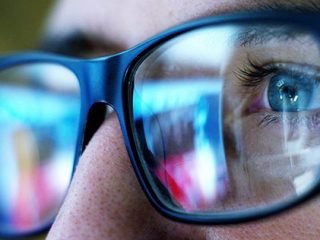
Dla kogo przeznaczone jest nasze rozwiązanie?
- Laboratoria producentów lamp powinny uwzględnić ocenę zagrożeń związanych z niebieskim światłem w procedurach testowania zgodności z normami.
- Laboratoria fotometryczne, które chcą rozszerzyć swoje usługi o system pomiaru bezpieczeństwa fotobiologicznego
- Specjaliści ds. zdrowia i bezpieczeństwa oraz naukowcy, którzy potrzebują pomiaru promieniowania optycznego poza laboratorium, np. do oceny ryzyka procesów przemysłowych na miejscu.
Co można mierzyć?
Ocena zagrożeń fotobiologicznych generowanych przez promieniowanie optyczne emitowane przez lampy jest złożonym problemem metrologicznym, ponieważ konieczne jest wykonywanie pomiarów spektroradiometrycznych i pomiarów wielkości skutecznych w szerokim zakresie widmowym, co wymaga specjalistycznego skalibrowanego sprzętu pomiarowego. Podczas testów sprzętu oświetleniowego, które są związane z bezpieczeństwem fotobiologicznym - natężenie napromienienia, efektywne natężenie napromienienia i efektywne natężenie promieniowania muszą być mierzone, aby móc zidentyfikować wszystkie zagrożenia dla oczu i skóry.
Pomiar zagrożenia światłem niebieskim w zakresie 300 - 700 nm
Do tego zastosowania GL Optic oferuje kompaktowy spektrometr laboratoryjny - GL SPECTIS 5.0 Touch. Ten specjalnie skalibrowany przyrząd dostarcza dokładnych danych z rozszerzonego wizualnego zakresu widmowego 200 - 1050 nm, w którym najbardziej niebezpieczne niebieskie światło występuje między 300 a 700 nm. Nasz nowatorski kreator zagrożeń niebieskim światłem jest wbudowany w nasze oprogramowanie Spectrosoft Analysis, aby poprowadzić operatora przez procedurę pomiaru krok po kroku w celu uzyskania klasyfikacji grupy ryzyka.
Efektywne wartości
GL SPECTROSOFT to dedykowane oprogramowanie dla spektrometrów GL SPECTIS, które oblicza: efektywne wartości natężenia napromienienia EB, EBK, ES, EUVA, EUV, EIR Eskin oraz efektywne wartości natężenia napromienienia takie jak LB, LIRA, LVISIRA. GL SPECTROSOFT nie tylko oblicza i prezentuje dane w przejrzysty sposób (wykresy/tabele), ale także generuje raporty RTF. Opcje obliczeń dotyczących bezpieczeństwa fotobiologicznego są dostępne w ramach licencji LAB lub Spectrosoft PRO z dodatkiem Bezpieczeństwo fotobiologiczne.
Promieniowanie i irradiancja
Do pomiarów natężenia napromienienia oferujemy Opti Probe 5.1.50 irradiance/illuminance. Podczas korzystania z tej sondy w połączeniu z naszym spektroradiometrem, wielkości efektywne są obliczane przez GL Spectrosoft na podstawie wartości natężenia napromienienia. Ta sonda optyczna wykorzystuje dyfuzor ze szkła krzemionkowego i wysokiej jakości światłowód ze szkła kwarcowego, który jest bardzo pożądany ze względu na wysoką precyzję i właściwości transmisyjne.
Do pomiarów natężenia promieniowania zalecamy specjalnie zaprojektowany teleskop Radiance Telescope, który jest sondą optyczną spełniającą wymagania normy IEC w zakresie rozdzielczości steradianowej / kąta bryłowego i rozszerzonego zakresu widmowego transmitancji.
Spektrometry i akcesoria GL Optic zawsze dostarczane są do klienta skalibrowane spektralnie, co daje gwarancję ich dokładności i wysokiej jakości działania. Opisane powyżej urządzenia spełniają wymogi bezpieczeństwa fotobiologicznego. Skontaktuj się z nami, aby uzyskać więcej informacji lub przeczytaj więcej w naszej sekcji artykułów.
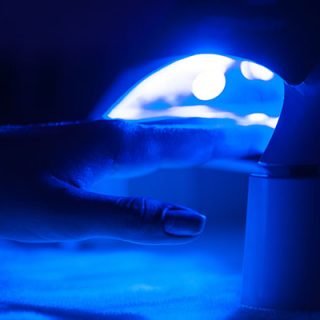
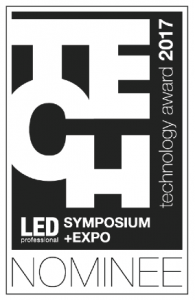
GL PSM System został nominowany do nagrody technologicznej podczas sympozjum LED Professional Symposium 2017 w Bregenz w Austrii.
GL Optic ogłosił nowy rewolucyjny GL PSM System 200 - 800 nm. Rozwiązanie to zostało zaprojektowane do wykonywania pomiarów i oceny ryzyka zgodnie z normami: IEC EN 62471:2008 (Bezpieczeństwo fotobiologiczne lamp i systemów lampowych) oraz IEC EN 14255 (Pomiar i ocena ekspozycji osób na niespójne promieniowanie optyczne). W skład systemu wchodzą następujące komponenty sprzętowe: fabrycznie skalibrowany spektrometr laboratoryjny o wysokiej rozdzielczości GL SPECTIS 5.0 TOUCH (UV-VIS) 200 - 800 nm, specjalnie zaprojektowana sonda natężenia napromienienia i teleskop natężenia napromienienia, które odtwarzają właściwości ludzkiego oka zgodnie z wyżej wymienionymi normami.
Zbuduj swój własny zestaw
Poniższe produkty można skonfigurować do pomiaru zagrożenia światłem niebieskim w celu testowania zgodnie z normami IEC 62471 i IEC 14255.

GL SPECTIS 5.0 Touch UV-VIS
Laboratoryjny, samowystarczalny inteligentny spektrometr GL SPECTIS 5.0 Touch
- Zawiera fabryczną kalibrację w rozszerzonym zakresie 200-800 nm
- Gotowość do podłączenia dedykowanych sond optycznych lub akcesoriów
- Używanie jako samodzielne urządzenie lub w połączeniu z komputerem PC
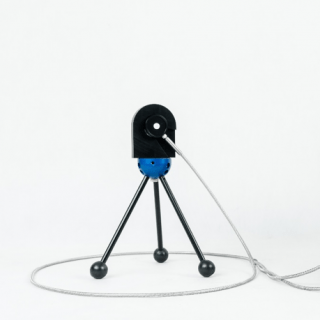
GL OPTI PROBE 5.1.50
Sonda optyczna z korekcją cosinusoidalną do pomiaru natężenia napromienienia.
- Korekta kosinusowa klasy A dla laboratoryjnej dokładności natężenia napromienienia widmowego
- Rozszerzona czułość spektralna dzięki dyfuzorowi ze szkła krzemionkowego
- Światłowód z precyzyjnym adapterem do podłączenia do spektroradiometru
*Kalibracja fabryczna w zestawie
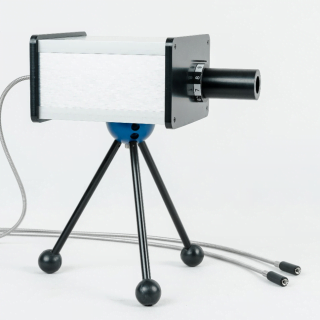
Teleskop GL Radiance
Dedykowana sonda optyczna do pomiaru promieniowania spektralnego 300-1400nm.
- Wysokiej jakości komponenty optyczne do pomiarów UV VIS NIR
- Precyzyjnie zaprojektowany system optyczny zgodny z wymaganiami normy IEC
- Światłowód z precyzyjnym adapterem do podłączenia do spektroradiometru
*Kalibracja fabryczna w zestawie
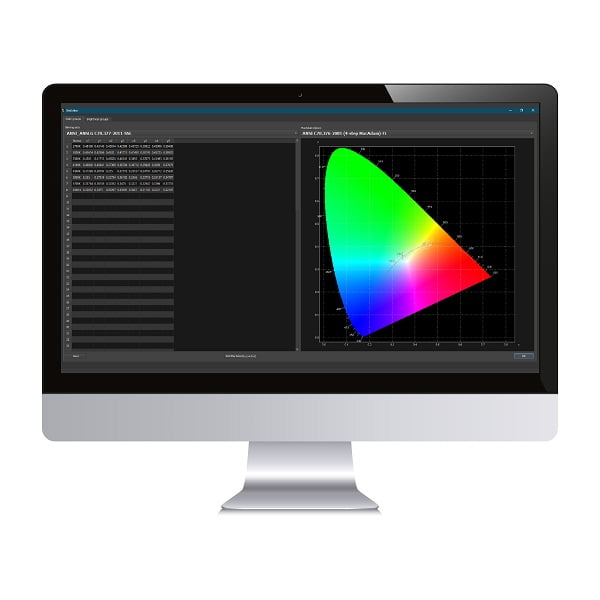
GL SPECTROSOFT M LAB
Narzędzie analityczne GL SPECTROSOFT dla zaawansowanych użytkowników koncentrujących się na szczegółowej analizie widmowej.
- Dedykowany kreator zagrożeń związanych z niebieskim światłem do klasyfikacji lamp
- Obliczanie wartości skutecznych zgodnie z normami IEC
- Zaimplementowane efektywne krzywe widmowe